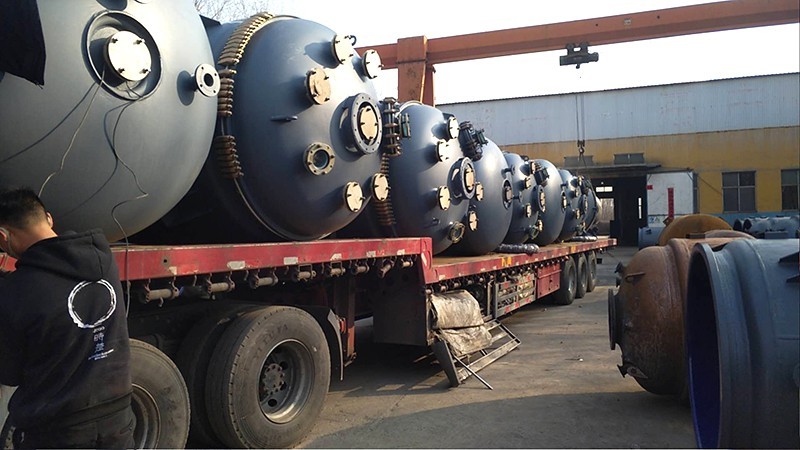For the enamel layer of chemical equipment such as enamel reaction tank, you can only see its surface layer. In fact, the firing of enamel layer includes the firing of bottom glaze layer and top glaze layer. Porcelain layer and glaze are two related but different main carriers of enamel glass. Due to the fact that the reaction vessel is a special composite material, the first step is the combination of metal substrate and inorganic material glaze. Ceramic layers are only the form, structure, and effect of their combination. Next, the
enamel reaction tank manufacturer will explain the structure of the enamel layer.
The enamel reaction tank glaze layer is a structural assembly with five different properties, including a bottom glaze layer and a top glaze layer. It is specifically divided into the following five layers:

1. The through layer is the adhesive layer between the steel billet metal and the primer.
2. Underglaze color layer.
3. The bonding layer between the base glaze and the top glaze - through layer.
4. Surface glaze layer.
5. Glazed layer.
The four factors that form interpenetrating layers:
1. Mutual exchange of components between two interfaces.
2. Due to the different enamel and softening points at the interface, there is mutual infiltration and diffusion between layers.
3. Mechanical bonding: The softening point of the enamel reaction tank bottom paint is higher than that of the top glaze, allowing the top glaze to penetrate into the primer layer during the firing process.
4. The physical and chemical reactions during the firing process cause continuous gas overflow, resulting in mixing between the components.
The glaze layer of the enamel reaction tank refers to the outer layer with a thickness less than 20um, which defines the surface thickness of the porcelain layer. Due to direct contact with corrosive liquids, gases, and other materials, many properties of the reaction vessel depend on the surface layer, such as gloss, smoothness, chemical stability, adsorption, etc. Therefore, the composition ratio and firing of the surface layer are particularly crucial.



 Address:Room 1202, Detaitang Building, No. 118 Huaguang Road, Zhangdian District, Zibo, Shandong
Address:Room 1202, Detaitang Building, No. 118 Huaguang Road, Zhangdian District, Zibo, Shandong WhatsApp:+8613386433135
WhatsApp:+8613386433135 Tel: +8613386433135
Tel: +8613386433135